 W
WCancer is one of the twelve constellations of the zodiac and is located in the Northern celestial hemisphere. Its name is Latin for crab and it is commonly represented as one. Its astrological symbol is♋. Cancer is a medium-size constellation with an area of 506 square degrees and its stars are rather faint, its brightest star Beta Cancri having an apparent magnitude of 3.5. It contains two stars with known planets, including 55 Cancri, which has five: one super-earth and four gas giants, one of which is in the habitable zone and as such has expected temperatures similar to Earth. At the (angular) heart of this sector of our celestial sphere is Praesepe, one of the closest open clusters to Earth and a popular target for amateur astronomers.
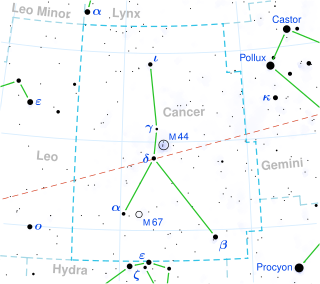 W
W13 Cancri is a K-type giant star in the constellation Cancer. It has an apparent magnitude of +6.41 and is approximately 970 light years from Earth.
 W
W49 Cancri is a single star in the zodiac constellation of Cancer, located 516 light years away from the Sun. It has the Bayer designation b Cancri; 49 Cancri is the Flamsteed designation. It is visible to the naked eye as a faint star with an apparent visual magnitude of about 5.6. It is moving away from the Earth with a heliocentric radial velocity of +27.5 km/s.
 W
W55 Cancri is a binary star system located 41 light-years away from the Sun in the zodiac constellation of Cancer. It has the Bayer designation Rho1 Cancri (ρ1 Cancri); 55 Cancri is the Flamsteed designation. The system consists of a K-type star and a smaller red dwarf.
 W
W55 Cancri b, occasionally designated 55 Cancri Ab, also named Galileo, is an exoplanet orbiting the Sun-like star 55 Cancri A every 14.65 days. It is the second planet in order of distance from its star, and is an example of a hot Jupiter, or possibly rather "warm Jupiter".
 W
W55 Cancri c, formally named Brahe, is an extrasolar planet in an eccentric orbit around the Sun-like star 55 Cancri A, making one revolution every 44.34 days. It is the third known planet in order of distance from its star. 55 Cancri c was discovered on June 13, 2002 and has a mass roughly half of Saturn.
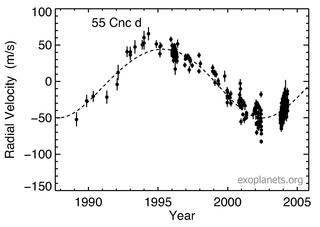 W
W55 Cancri d, formally named Lipperhey, is an extrasolar planet in a long-period orbit around the Sun-like star 55 Cancri A. Located at a similar distance from its star as Jupiter is from our Sun, it is the fifth and outermost known planet in its planetary system. 55 Cancri d was discovered on June 13, 2002.
 W
W55 Cancri e is an exoplanet in the orbit of its Sun-like host star 55 Cancri A. The mass of the exoplanet is about 8.63 Earth masses and its diameter is about twice that of the Earth, thus classifying it as the first super-Earth discovered around a main sequence star, predating Gliese 876 d by a year. It takes less than 18 hours to complete an orbit and is the innermost-known planet in its planetary system. 55 Cancri e was discovered on 30 August 2004. However, until the 2010 observations and recalculations, this planet had been thought to take about 2.8 days to orbit the star. In October 2012, it was announced that 55 Cancri e could be a carbon planet.
 W
W55 Cancri f, also designated Rho1 Cancri f and formally named Harriot, is an extrasolar planet approximately 41 light-years away from Earth in the constellation of Cancer. 55 Cancri f is the fourth known planet from the star 55 Cancri and the first planet to have been given the designation of "f".
 W
W82 Cancri (Pi2 Cancri, π2 Cancri) is a solitary, orange-hued star in the zodiac constellation of Cancer. This is an evolved K-type giant star with a stellar classification of K1 III. With an apparent visual magnitude of +5.33, it is visible to the naked eye on a dark night. Based upon an annual parallax shift of 5.37 mas as seen from Earth, this star is located roughly 610 light years from the Sun. At that distance, the visual magnitude is diminished by an extinction of 0.10 magnitudes due to interstellar dust.
 W
WAbell 31 is an ancient planetary nebula in the constellation of Cancer. It is estimated to be about 2,000 light years away. Although it is one of the largest planetary nebulae in the sky, it is not very bright.
 W
WAlpha Cancri, also named Acubens, is a star system in the constellation of Cancer.
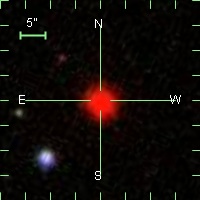 W
WAZ Cancri (AZ Cnc) is a M-type flare star in the constellation Cancer. It has an apparent visual magnitude of approximately 17.59.
 W
WThe Beehive Cluster, is an open cluster in the constellation Cancer. One of the nearest open clusters to Earth, it contains a larger population of stars than other nearby bright open clusters. Under dark skies, the Beehive Cluster looks like a small nebulous object to the naked eye, and has been known since ancient times. Classical astronomer Ptolemy described it as a "nebulous mass in the breast of Cancer". It was among the first objects that Galileo studied with his telescope.
 W
WBeta Cancri, also named Tarf, is the brightest star in the zodiacal constellation of Cancer. It has an apparent visual magnitude of +3.5 and an absolute magnitude of −1.2. Based on parallax measurements obtained during the Hipparcos mission, it is approximately 290 light-years distant from the Sun. An exoplanet, designated Beta Cancri b, is believed to be orbiting the star.
 W
WNGC 2623/Arp 243 is an interacting galaxy located in the constellation Cancer. NGC 2623 is the result of two spiral galaxies that have merged. Scientists believe that this situation is similar to what will occur to the Milky Way, which contains our solar system, and the neighboring galaxy, the Andromeda Galaxy in four billion years. Studying this galaxy and its properties have provided scientists with a better idea of the collision of the Milky Way and the Andromeda. Due to NGC 2623 being in the late stage of merging, the compression of the gas within the galaxy has led to a large amount of star formation, and to its unique structure of a bright core with two extending tidal tails.
 W
WDelta Cancri is a double star about 180 light-years from the Sun in the constellation of Cancer.
 W
WDLA0817g, also known as the Wolfe Disk, is a galaxy located in the constellation Cancer, 12.276 billion light-years from Earth.
 W
WEPIC 211945201 b is a Neptune-like exoplanet that orbits an F-type star. It is also called K2-236b. Its mass is 27 Earths, it takes 19.5 days to complete one orbit of its star, and is 0.148 AU from its star. Its discovery was reannounced in 2018. This was the first exoplanet discovered by scientists based in Physical Research Laboratory, Ahmedabad, India. The discoverers were Abhijit Chakraborty (PRL), Arpita Roy (Caltech), Rishikesh Sharma (PRL), Suvrath Mahadevan, Priyanka Chaturvedi, Neelam J.S.S.V Prasad (PRL), and B. G. Anandarao (PRL).
 W
WEpsilon Cancri is a white-hued binary star system in the zodiac constellation of Cancer. It is the brightest member of the Beehive Cluster with an apparent visual magnitude of +6.29, which is near the lower limit of visibility with the naked eye. The annual parallax shift of 5.3 mas as seen from Earth yields a distance estimate of approximately 616 light-years from the Sun.
 W
WGamma Cancri is a multiple star system in the constellation of Cancer.
 W
WGliese 3470 b, abbreviated as GJ3470b, is an exoplanet orbiting the star Gliese 3470, both of which are located in the constellation Cancer. With a mass of just under 14 Earth-masses and a radius approximately 4.3 times that of Earth's, it is likely something akin to a mini-Neptune despite the initially strong belief that the planet was not covered in clouds like the gas giants we are familiar with in our solar system. The planet belongs to the rare category of super-puffs.
 W
WIota Cancri is a double star in the constellation Cancer approximately 300 light years from Earth. It also has the name Decapoda.
 W
WMessier 67 is an open cluster in the constellation of Cancer. It was discovered by Johann Gottfried Koehler in 1779. Age estimates for the cluster range between 3.2 and 5 billion years. Distance estimates are likewise varied and typically range between 800–900 pc. Estimates of 855, 840, and 815 pc were established via binary star modelling and infrared color-magnitude diagram fitting, accordingly.
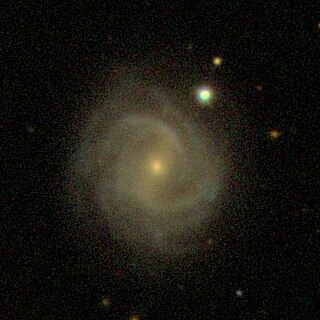 W
WNGC 2503 is an isolated spiral galaxy approximately 254 million light-years away in the constellation Cancer. The galaxy was discovered on February 17, 1865 by astronomer Albert Marth.
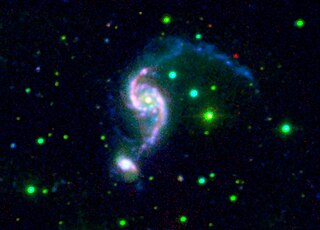 W
WNGC 2535 is an unbarred spiral galaxy exhibiting a weak inner ring structure around the nucleus in the constellation Cancer that is interacting with NGC 2536. The interaction has warped the disk and spiral arms of NGC 2535, producing an elongated structure, visible at ultraviolet wavelengths, that contain many bright, recently formed blue star clusters in addition to enhanced star forming regions around the galaxy center. The two galaxies are listed together in the Atlas of Peculiar Galaxies as an example of a spiral galaxy with a high surface brightness companion.
 W
WNGC 2536 is a barred spiral galaxy with a prominent inner ring structure encircling the bar in the constellation Cancer that is interacting with NGC 2535. The two galaxies are listed together in the Atlas of Peculiar Galaxies as an example of a spiral galaxy with a high surface brightness companion.
 W
WNGC 2608 is a barred spiral galaxy located 93 million light-years away in the constellation Cancer. It is 62,000 light-years across, and about 60% of the width of the Milky Way. It is considered a grand design spiral galaxy and is classified as SB(s)b, meaning that the galaxy's arms wind moderately around the prominent central bar. It was classified by Halton Arp under "galaxies with split arms" in his 1966 Atlas of Peculiar Galaxies who noted that the "nucleus may be double or superposed star." NGC 2608 is now considered to be a pair of interacting galaxies.
 W
WNGC 2775 is a spiral galaxy in the northern constellation of Cancer, located at a distance of 67 megalight-years from the Milky Way. It was discovered by William Herschel in 1783. NGC 2775 belongs to the Antlia-Hydra Cluster of galaxies and is the most prominent member of a small galaxy group known as NGC 2775 group, part of the Virgo Supercluster, along with the Local Group. Other members of the NGC 2775 group include NGC 2777 and UGC 4781.
 W
WNGC 2803, also known as PCG 26181, is a Spiral Galaxy in the constellation Cancer. It was discovered March 21, 1784, by William Herschel. It is interacting with NGC 2802.
 W
WNGC 2812 is a lenticular galaxy in the constellation Cancer. It was discovered by Albert Marth on February 17, 1865.
 W
WOJ 287 is a BL Lac object located 3.5 billion light-years away that has produced quasi-periodic optical outbursts going back approximately 120 years, as first apparent on photographic plates from 1891. Seen on photographic plates since at least 1887, it was first detected at radio wavelengths during the course of the Ohio Sky Survey. It is a supermassive black hole binary. The intrinsic brightness of the flashes corresponds to over a trillion times the Sun's luminosity, greater than the entire Milky Way galaxy's light output.
 W
WRX J0806.3+1527 or HM Cancri (sometimes shortened to HM Cnc or J0806 after establishing identity) is an X-ray binary star system about 1,600 light-years (490 pc; 1.5×1016 km) away. It comprises two dense white dwarfs orbiting each other once every 321.5 seconds (in this system the "year" duration is of only 5.4 minutes), at an estimated distance of only 80,000 kilometres (50,000 mi) apart (about 1/5 the distance between the Earth and the Moon). The two stars orbit each other at speeds in excess of 400 kilometres per second (890,000 mph). The stars are estimated to be about half as massive as the Sun. Like typical white dwarfs, they are extremely dense, being composed of degenerate matter, and so have radii on the order of the Earth's radius. Astronomers believe that the two stars will eventually merge, based on data from many X-ray satellites, such as Chandra X-Ray Observatory, XMM-Newton and the Swift Gamma-Ray Burst Mission. These data show that the orbital period of the two stars is steadily decreasing at a rate of 1.2 milliseconds per year as they thus are getting closer by approximately 60 centimetres (2.0 ft) per day. At this rate, they can be expected to merge in approximately 340,000 years. With a revolution period of 5.4 minutes, RX J0806.3+1527 is the shortest orbital period binary system currently known.
 W
WWD J0914+1914 is the first single white dwarf star found to have a giant planet orbiting it. Evidence of the giant planet was discovered by a team of astronomers from the UK, Chile and Germany.
 W
WX Cancri is a variable star in the northern constellation of Cancer. It has a red hue and is visible to the naked eye at peak magnitude, fluctuating around an apparent visual magnitude of 6.28. The distance to this object is approximately 2,900 light years based on parallax measurements, but is drifting closer with a radial velocity of −5 km/s. It lies very close to the equinox and so is subject to lunar occultations.